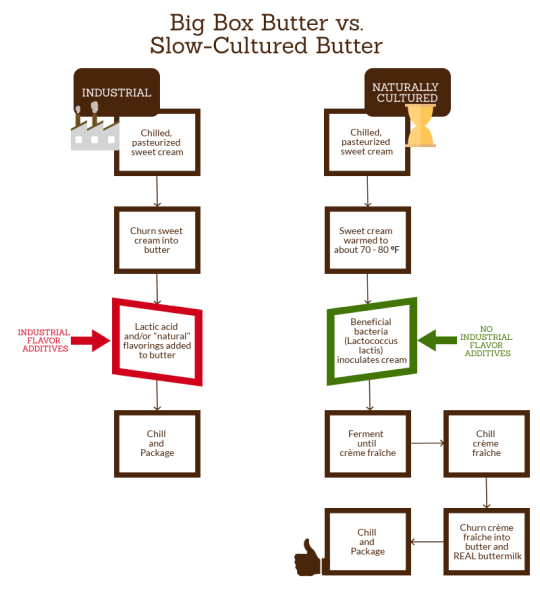It’s Sunday afternoon and you’re strolling the grocery store preparing for the big week ahead. You’ve hit up the produce section, the pasta section, and butcher’s counter, and now you’ve landed in the dairy aisle. There are at least ten different kinds of butter to choose from. Cue the Butter Overwhelm. Do you go with the regular sweet cream butter, the organic Amish butter, the all-natural grass-fed Irish butter, the small-batch cultured butter? “Ah, whatever, I’ll just grab this one, it has the smallest price tag and the best branding.”
Did you know the vast majority of butter sold in America is sweet cream butter? That means that, after the cream is pasteurized, it is immediately churned. That also means that it has very little taste. So, to give it flavor, many butter manufacturers add “natural flavoring,” or “lactic acid.” Butter churned from sweet cream lacks the flavors that can only come from a long-ripening process where a special mixture of bacteria is added to the cream and held at precisely the right temperature, for precisely the right amount of time.
“Yeah, totally, that’s why I get European butter.”
Not so fast. “European” butter is often interpreted as “cultured.” Check the label whenever you see this term. If you see the words “natural flavoring” or “lactic acid” as an added ingredient, it means that the producer added a powder and/or liquid to their butter after the churning process to make it taste like the cream was naturally cultured before churning.
Want to know the truth? A big name and attractive packaging don’t guarantee flavor.
Awareness + skill = quality. That means breaking down the steps and perfecting them, improving your process as you go along. In turn, you get a better product, and in this case, a better butter.

Shop Slow-Churned Cultured Butter Here.